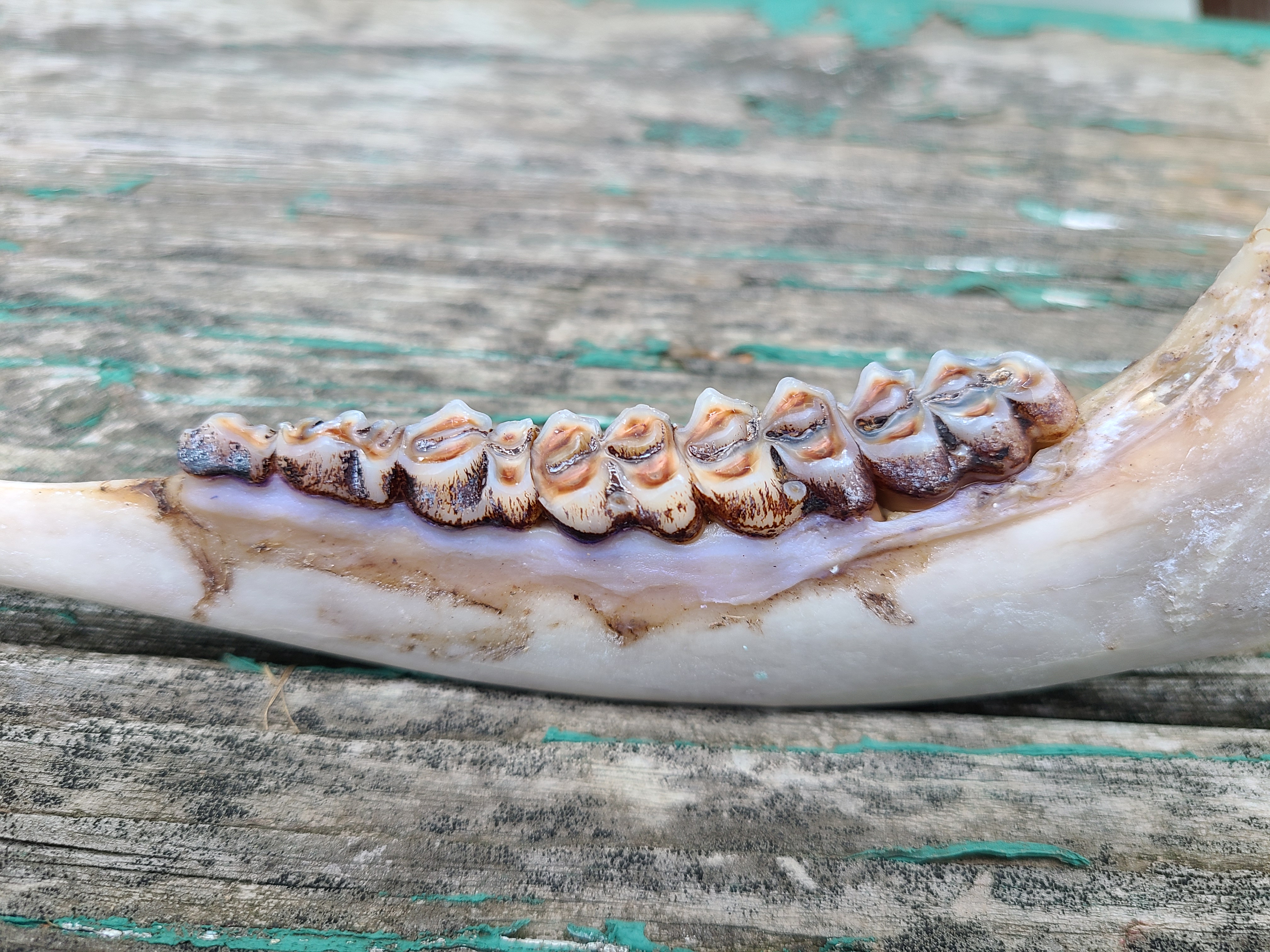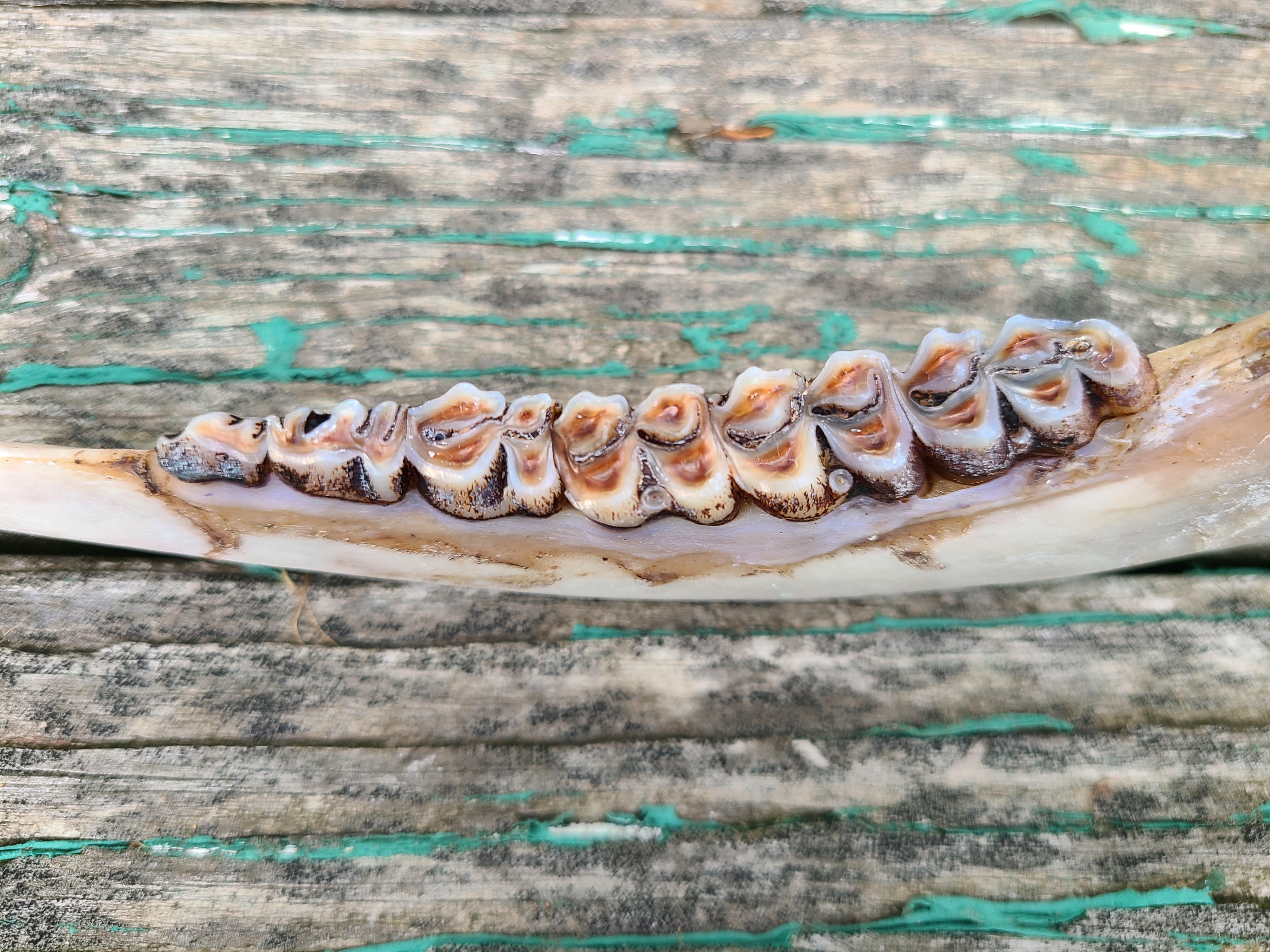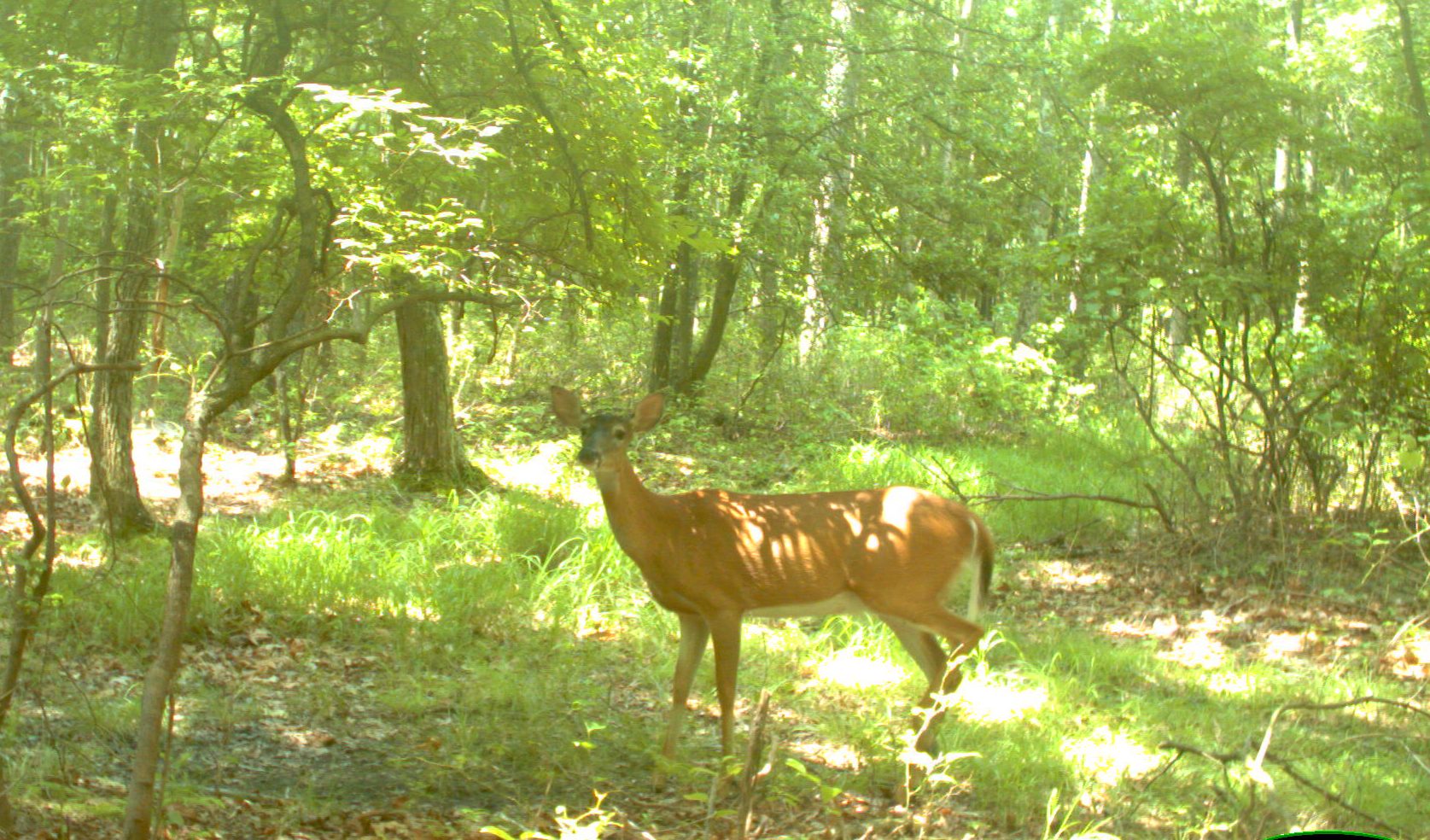Back in August I received a mortality signal from one of our collared deer in the Susquehannock State Forest, Doe 20063. There wasn’t much left of the carcass by the time I got there, unfortunately, but I did find her lower jawbone and take it home with me. I was hoping that while there was little evidence to tell me about her death, her teeth might tell me something about her life.
The method of aging a deer by the appearance of its teeth, often called the Severinghaus method so named for its developer, is the standard and was published in 1949. The premise is simple: The act of chewing vegetation wears away at the components of the teeth, leading to visible changes as a deer ages. The older a deer is, the more worn the teeth will appear.
In the decades since, this method of aging deer by tooth eruption (when the “baby teeth” are lost and adult teeth emerge) and wear has been thoroughly studied. And the consensus across the literature is this: While tooth eruption is a reliable way to assign ages between 6 months and 2.5 years, using tooth wear to estimate beyond that point is not.
Take Doe 20063 for example. Follow this guide to apply the Severinghaus method to the photos of her jaw (scroll down to the “How to Classify Deer by Age Group” section). What age would you give her based on the example images?


According to this guide, and many others like it, I would age Doe 20063 at about 5 to 6 years. But Doe 20063 has been known to the project for a long time and she’s quite a bit older than that. She was first captured and ear-tagged back in the winter of 2013 when she was already an adult, meaning she had been born in 2011 or earlier. That makes her at least 10 years old by the time she died this August.
Studies have found that the Severinghaus method tends to overestimate the age of young deer and underestimate the age of old deer. One study found that “79% of the biologists underestimated the age of the 9-10 year class sample by 3-4 years”. That’s a big difference and is precisely what happens with Doe 20063.
It turns out that many factors affect the wear rate of teeth. The original Severinghaus study followed the tooth development and wear of captive deer raised in the Albany, New York. Tooth wear rates have been found to vary across deer populations, likely due to regional differences in diet – the fiber and silica contents of browse along with the amount of sand and grit present on vegetation influence the rate of wear of teeth. So using example jaws from Georgia to age a deer from Pennsylvania isn’t the best idea.
And there are variations in tooth wear even within the same population. Males and females have been shown to exhibit different rates of tooth wear, with male teeth wearing faster than female teeth. Van Deelen et al. (2000) found that even though males may be up to 40% larger in body mass than females, their molars had only a 4% greater surface area, meaning they are consuming — and chewing — more food than females but on the same tooth surface area. Often the jaws used to train biologists in aging deer may include proportionally more males than females if they come from hunter-harvested deer, so biologists learn to age deer based on the wear patterns of males — causing them to underestimate female ages.
Despite the large body of research on ungulate dentition, tooth wear as an indicator of age in white-tailed deer has too much uncertainty for use in scientific pursuits. Now that you know what to look for, however, deer hunters may be interested in a taking a peek at their deer’s teeth this fall — just be prepared to tack on a confidence interval of ± a few years to your result!
-Amanda Zak
Crew Leader
PGC Deer and Elk Section
